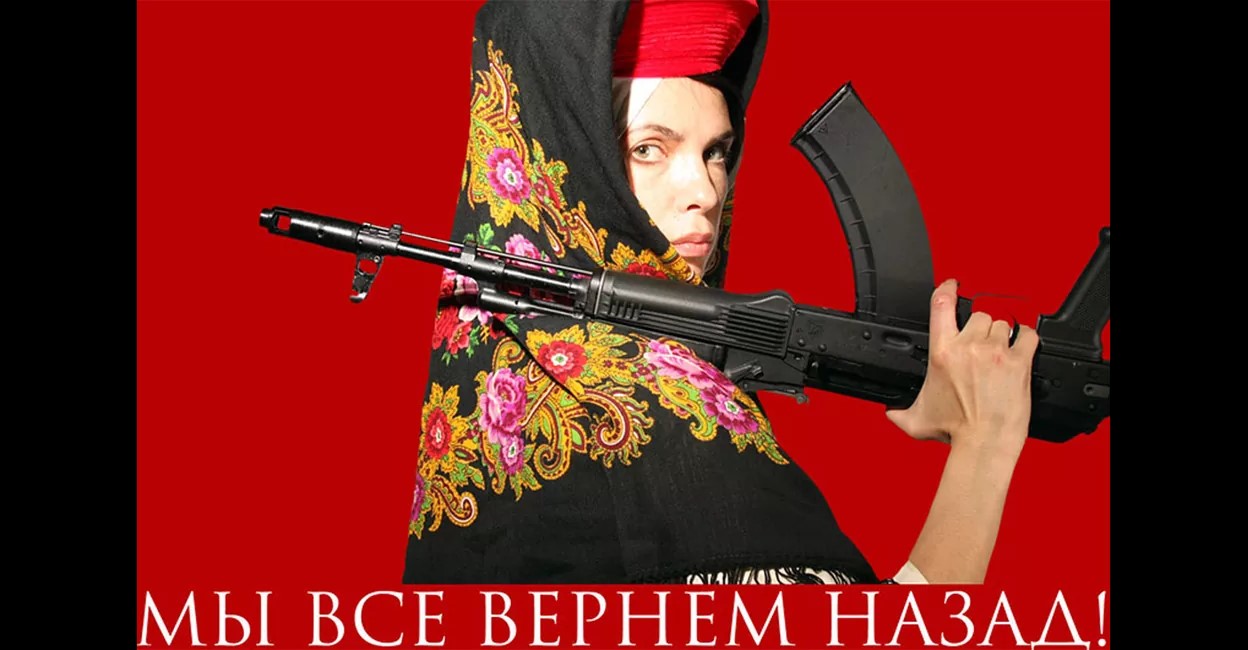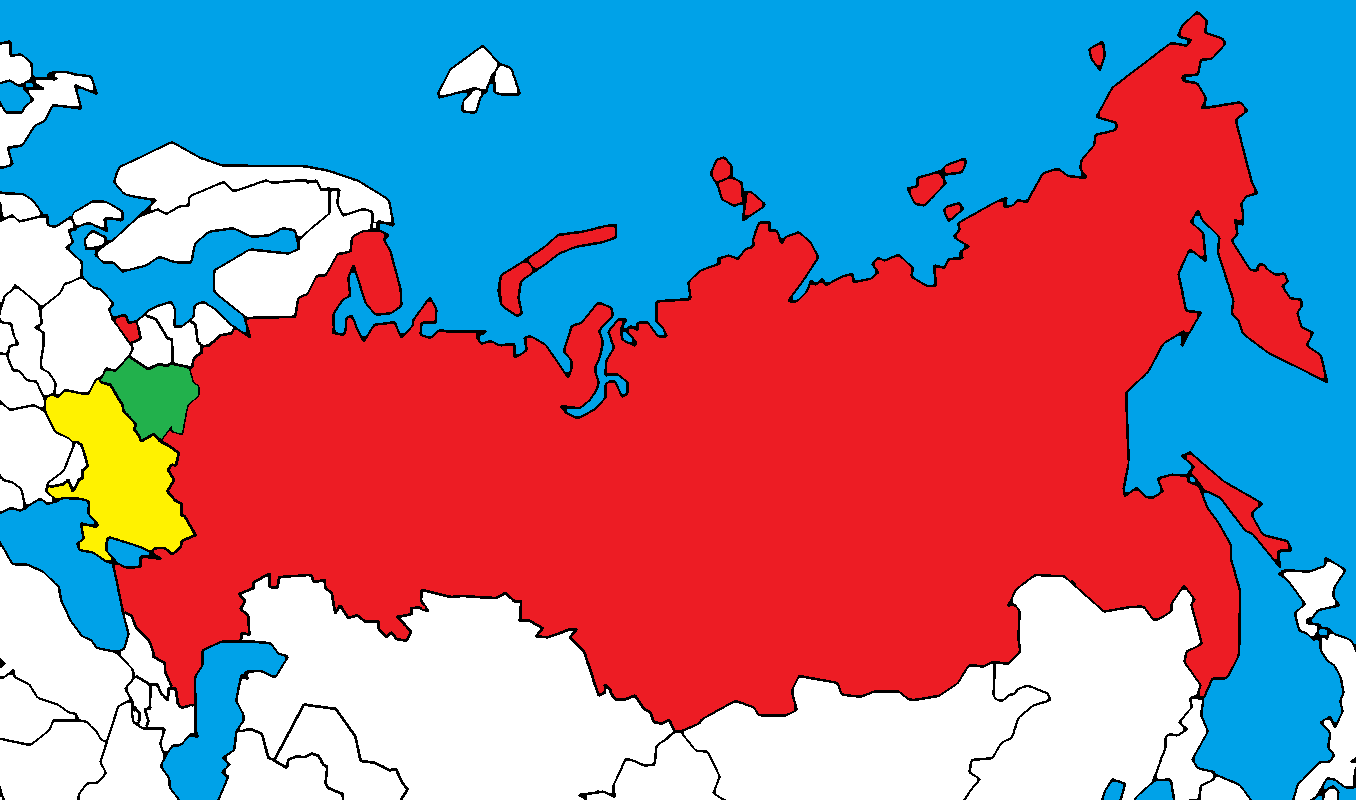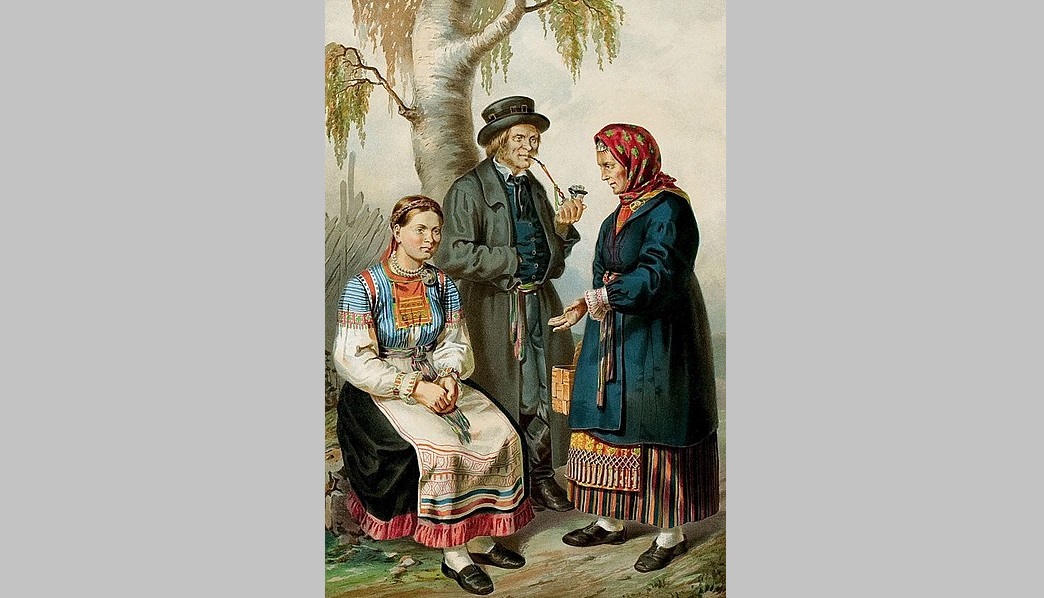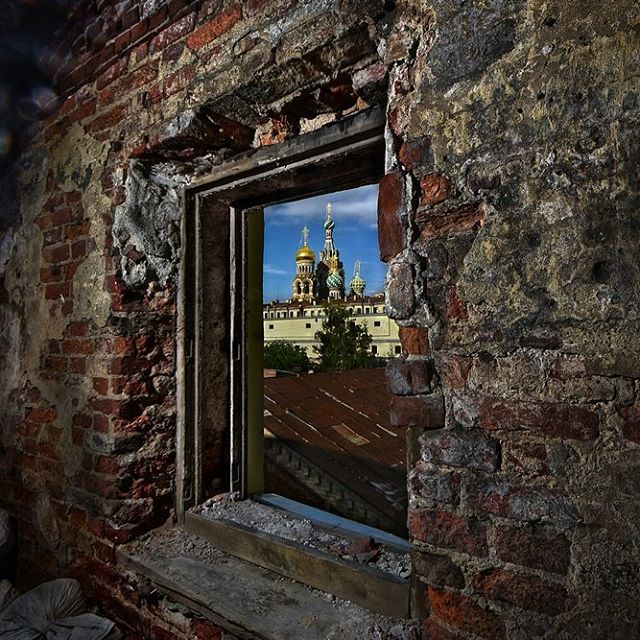
In all too many cases, he continues, the fascist aesthetic of Leni Riefenstahl is present and “behind it stands a corresponding ideological basis.”“Masculinity, militarism, monumentalism, and an appeal to antiquity are all things we have already seen and not so long ago – all of 70 or 80 years ago in Nazi Germany.” And some things we see in Russia today “shock by their similarity (is this accidental?) with the forms of Albert Speer or Arno Brecher of that period,” Malkiel says.
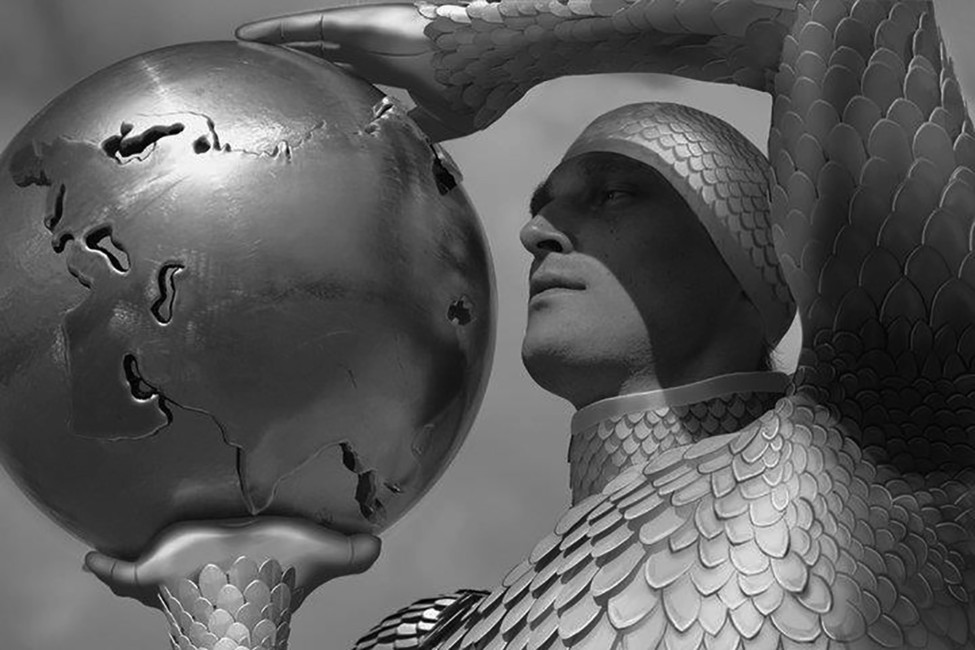
“At first glance,” Malkiel continues, “the ideology of ‘the Eurasian Movement’ is unlike the ideology of the NSDAP. However, when one talks about ‘a Eurasian Union’ on the space of the former USSR, the question arises: by what means will ‘the reunification’ of these territories be carried out?”
And when one asks that question, he says, “we see there populism and expansionism and ‘special path’ and militarism and extremism – that is, most of familiar aspects of fascism.”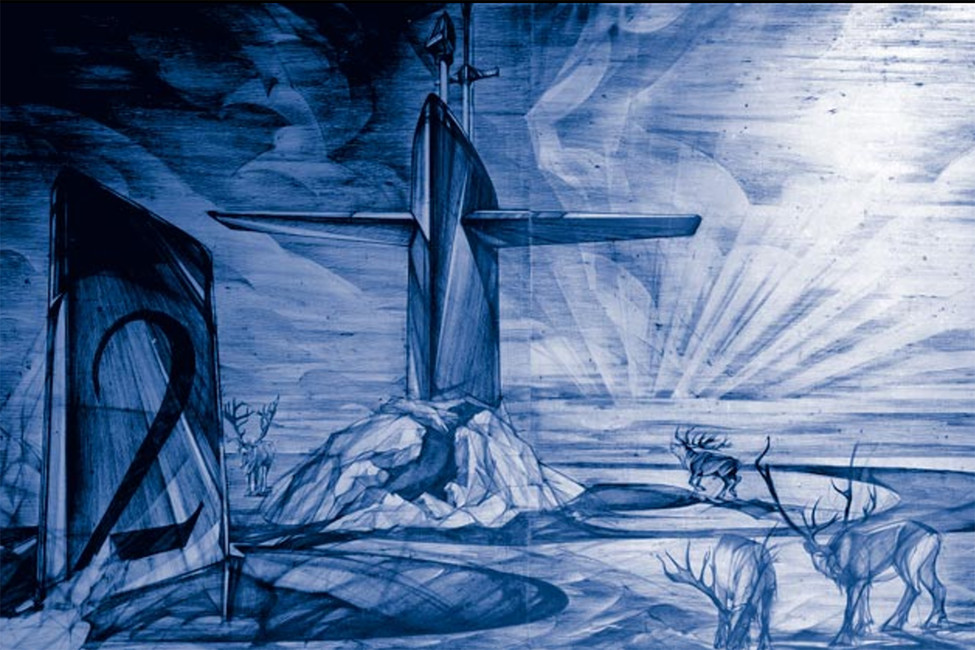
Fifteen years ago, Eduard Limonov, then a comrade in arms to Aleksandr Dugin, praised the Eurasianist for being in the Russian context “’the Kirill and Methodius of fascism.’” Today, Malkiel says, “the catechism of a member of the Eurasian Youth Movement” does not leave any doubt about that.
“You must be a master,” that document reads. “You were born to rule Eurasia. You are more than a man. Our goal is absolute power. We are the Union of Lords, of the new overlords of Eurasia. We will turn everything back. Such is the white testament of Eurasia.”
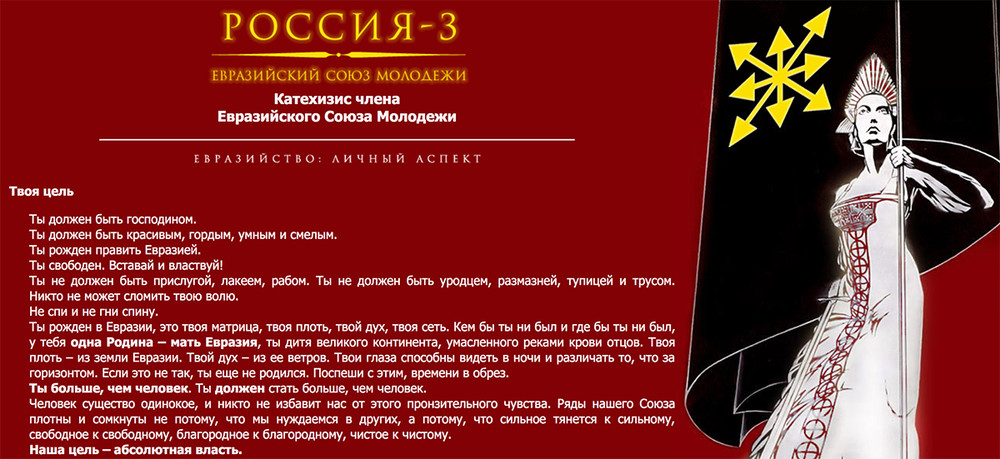
Such attitudes have spread beyond politics, Malkiel continues. They are now informing the work of many Russian artists who say these are simply a matter of “the Russian style,” an indication of just how far they have spread into the popular culture and how much that style now simply represents a recrudescence of “a fascist aesthetic” in Putin’s Russia.
That is clearly seen in the posters Russian artists prepared for the Sochi Olympiad, which like their Nazi predecessors featured “’true Aryans, blond and blue eyes in front of buildings whose neo-classical architecture completely coincides with the style of the Third Reich.” It is impossible,” Malkiel continues, “not to see corresponding parallels.”
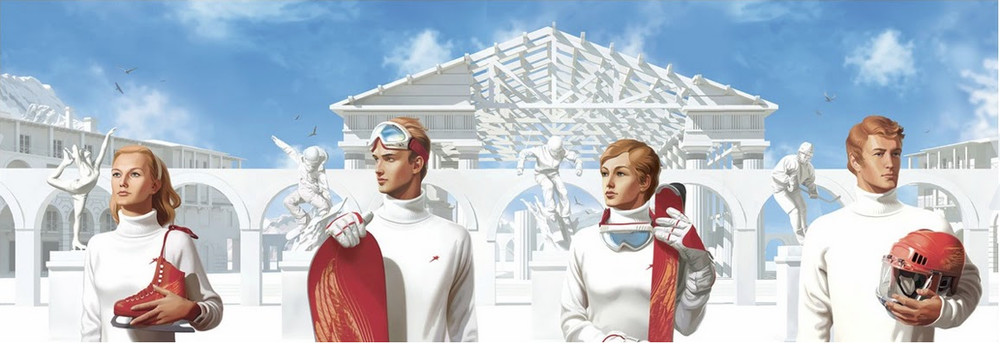
Some Russian artists argue that they have the right to use fascist symbols because the Soviet Union defeated Nazi Germany and thus can appropriate its art, but “in fact,” they are using it in anything but a critical way but rather to promote a similar aesthetic and a similar political agenda.
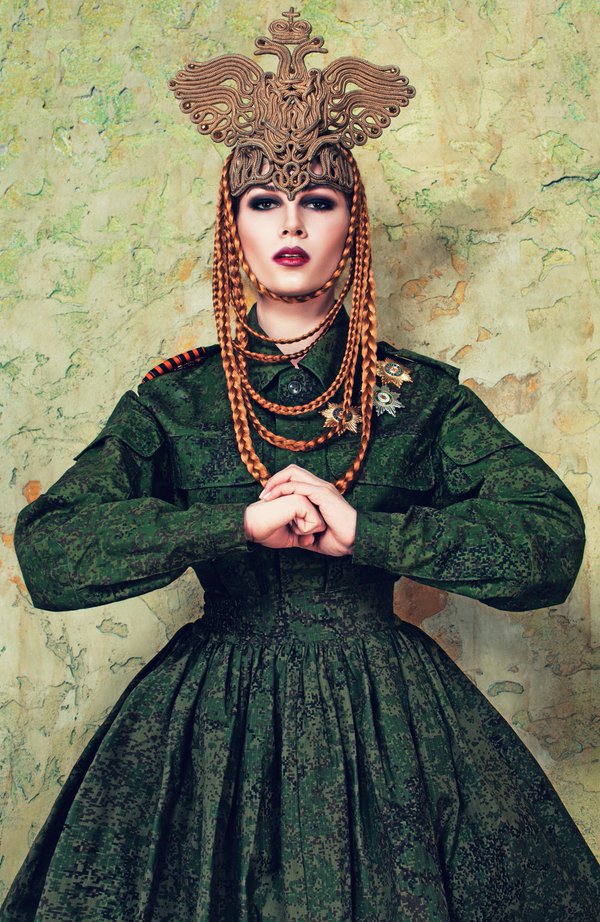
And “present-day Russian ‘stormtrooper artists’ and ideologues of extreme right views with each year see ever more in Putin and his regime ‘a common spirit.’” Dugin is among them. Almost a decade ago, he said that Putin was “returning to us the symbols of the Soviet period and respect for it” and the need to exclude all Western influence on Russia.
Already at that time, he continues, “Dugin sensed the side to which the Russian powers that be were drifting. The events which have followed” have only encouraged “the ultra-right ideologues and artists” to conclude that he was right.
“Today we see,” Melkiel says, “how nostalgia for the Soviet empire is being reborn along with the aesthetics of that time, the aesthetics of Stalinism which in many of their manifestations are almost indistinguishable from the aesthetics of Nazism.” Indeed, it is “more correct to say that today we see their new birth in combination with each other.”
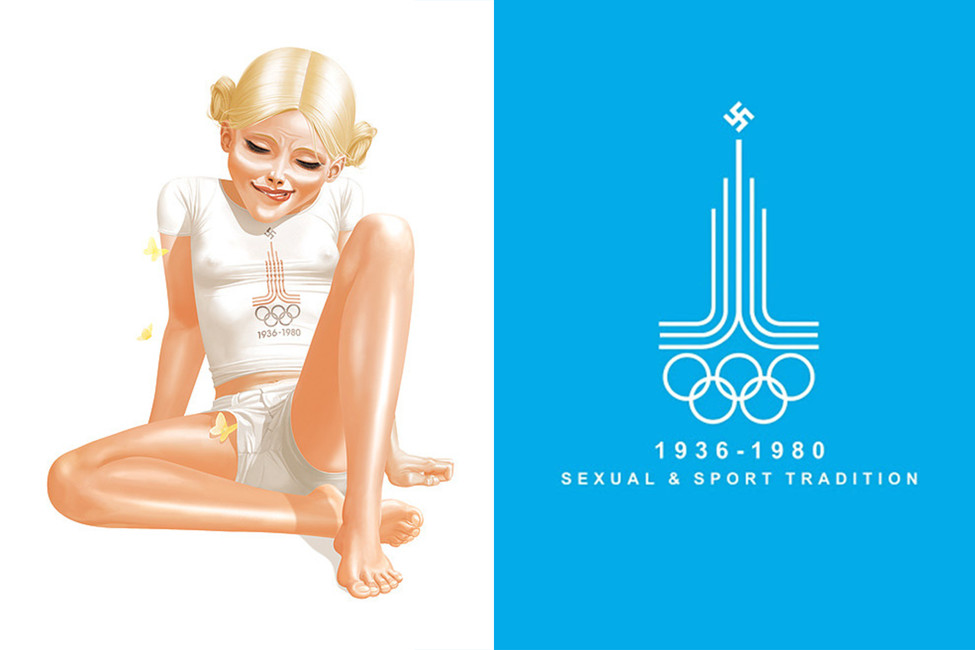
Related:
- Putin leading Russia ever more rapidly to fascism and the world to war, Israeli analyst says
- Russia’s coming Time of Troubles
- Containment of Putin’s Russia in today’s globalized world won’t be easy or even enough
- Putin’s Victory Parade – a horrific Orwellian exercise, Khots says
- Putin accelerating his plan for long-term confrontation with the West, Illarionov says
- The Ordinary Fascism
- ‘Some damn thing in the Balkans’ again — Putin seeks to exacerbate conflicts there
- Three Russian answers to the question ‘Is a Putin-Trump strategic alliance possible?’
- Like his ‘hybrid wars,’ Putin’s ‘hybrid repressions’ are all too real, Tuomi says
- What Putin is doing is “hooliganism” at the state level, not struggle for spheres of influence, Portnikov says
- Putin conducts his foreign policy like a special op, Melnikov says

